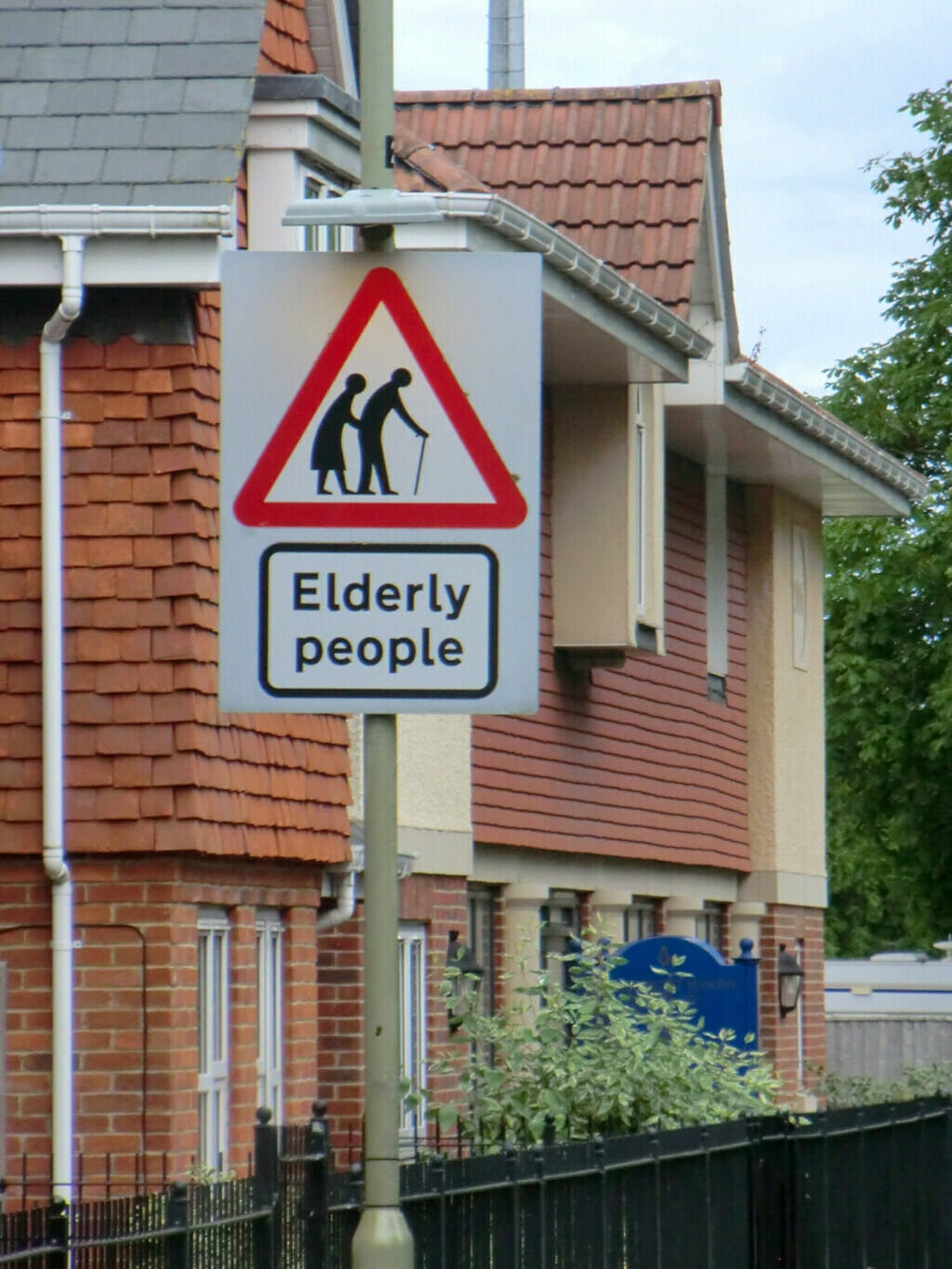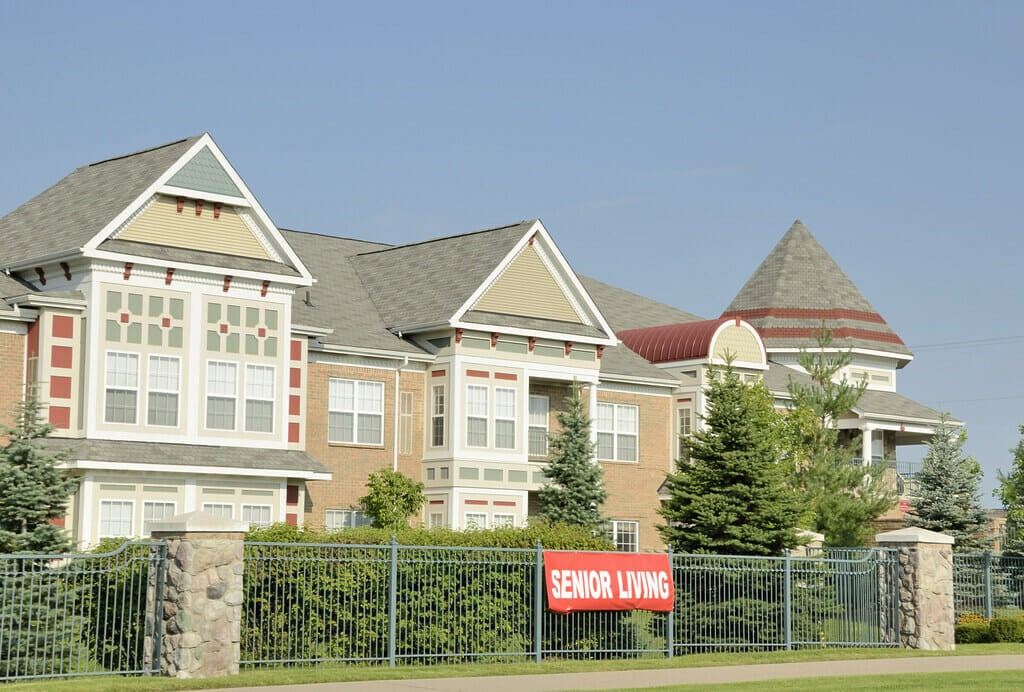In 1998 there were 10,000 retirement village villas in Aotearoa. Last year, there were 38,500 and by 2043 people aged 75+ are expected to increase by 142%. If you’re lucky enough to have the cash and play croquet into the sunset then a retirement village could be for you but be sure to read the fine print. In the first of a three part series for WOMAN Sasha Borissenko investigates.
Residential village contracts – the devil is in the detail
After Helen Edgecombe’s husband passed away she lived in her home for a year before finding the maintenance of the house and garden too much. She either had to pay someone to do the work or wait until her children could find the time to do it. Just months shy of turning 65 she decided to look into Tauranga’s Althorp retirement village, a place designed to blend high quality accommodation and resort-style facilities set in beautiful landscaped gardens, the website reads.

Whether you’re a fan of bowls, knitting, puzzling, art, tennis, snooker, darts, rummikub, going to the movies, croquet, aqua aerobics, running on the treadmill, singing in a choir, reading in a library, getting your hair styled, or gardening, the 10 hectares, 210 residences, on-site motel, and amenities resemble a locked gate community to the privileged hoping to live out their final chapter in style. It’s a scene from the Love Boat, with golden oldies cruising into their twilight years.
“I can share my own experience – that I feel secure, relaxed, and happy here. If anything goes wrong in my villa, then I ring the office and they get someone to sort it out.
“You have your privacy but I also know that if my curtains are not open in the morning, then one of my neighbours will notice and let the office know and they will check on me.”
It doesn’t feel institutional at Althorp, she says, where the variety of apartments, houses, and villas are situated at angles, not in rows like any suburban subdivision. It means 95 percent are north facing.
With her lovely patio, Edgecombe likes to potter in her flower garden that boasts 20 roses. If there’s anything she can’t do, she asks the gardener to help who would do 100% of the gardening if she wanted.
“You can be as independent as you want to be. I do a lot with family and friends outside of the village but I have village friends too. We go walking or shopping together or just for coffee. You can have meals in the lodge here.
“There is a fantastic shopping mall close by, with a supermarket, doctors and a pharmacy too. Many of the stores in the mall will deliver into our village for free. I just walk through our security gates and go shopping.”
For the non-drivers, the village is close to bus services and there are two 12-seater buses that do shopping trips three times a week as well as excursions to gardens and coffee shops.

Retirement villages 101
The Retirement village sector contributed $1.1 bn or 0.4% of national GDP in 2017, employing approximately 19,000 people. The value of consideration paid by residents has been estimated to be between NZD$18b-25b.
In 2021 there were 417 villages housing approximately 50,000 older people. A total of 62% of the 36,000 units were owned by corporate operators, 10% by not-for-profits, and 25% by independent operators.
For residents, retirement villages aren’t the same as owning or renting a home. All residents have an Occupation Rights Agreement and just 5% of retirees have unit title ownership agreements. The other 95% of residents have a Licence to Occupy contract. It means they have a licence to live in the unit and pay weekly fees to cover overheads such as rates, insurance, and water, for example.
Licensing also means village residents don’t have input in the sales process, price, and timing of a resale of a unit; forgoing any capital gain from the purchase.
At Althorp, on top of weekly fees, serviced one-bedroom apartment occupation licences start at $395k; you can get a one-bedroom villa with Mount Maunganui views for $450k, and a three-bedroom, two-bathroom apartment for $792k.
Before signing the ORA to her two-bedroom villa, Edgecombe made sure to go through every detail with her lawyer and adult children. If she is to leave or pass away, she and her family will get 70 percent of what she originally paid, as per the contract.
“I had previously worked at a law firm so I am very clear on how important it is to understand what you are signing up for.
“All the rules and requirements are set out in black and white in the Occupation Rights Agreement (ORA). There is no reason not to know exactly what you are signing up for – so there is no point in complaining afterwards. I have no regrets at all.”

The other side of the story
For Deirdre* and her husband John, it’s a different story. The couple had just finished building a four-bedroom house with all the bells and whistles but they were overwhelmed by the size and imminent maintenance.
On the advice of a friend, they opted to sell their house for $560k and move to a two-bedroom villa in a retirement village for $445k. Together they pay an additional weekly fee of $138, which is capped.
Once they paid their deposit they were given their ORA, disclosure statement, and a copy of the Village Retirement Act to assess with a lawyer.
“I’ve got university qualifications, I’ve worked in a profession all of my life so I read every single word in those agreements and we discussed them at length with our lawyer. But that didn’t prepare us for what we’ve had to experience. It’s not until you actually live in it that you realise there are hidden meanings in the contracts.”
The cracks started to show when the pair were set to move to the village and were told a day prior that the unit wasn’t ready, forcing them to camp for two weeks. When they arrived, the development was largely under construction. The gravel roads have not been paved since.
One day someone came rushing up to Deirdre’s door screaming that a woman had fallen on the street and was lying in a pool of blood next to her walker. Shaken, the couple sat down that night and wrote down the number of people who had suffered accidents due to the poor accessibility and safety standards. They tallied 17 just that year.
Contrary to the compliance reports and disclosure statements, the curbs are too high for walkers and scooters, gravel footpaths are incorporated in driveways, and there’s no accessible route to get to the amenity centre, bowles lawn, and swimming pool, for example. They’ve seen accidents resulting in broken hips, broken legs, and innumerable broken arms.
“We’ve had several engineering experts come in and agree the design and implementation is shocking. We’ve made formal complaints and gone to mediation but it’s clear the operators aren’t going to do anything about it. I’ve written to everyone and anyone and I’ve run out of people I can think of to ask for help.”
“We’re trapped here. We can’t get out”
Under the Retirement Villages Act, operators must respond to complaints within 20 working days. Operators are then required to detail complaints made every six months to the Te Ara Ahunga Ora Retirement Commission – a crown entity mandated to monitor the effects of the sector’s legal framework.
In the six-month period ending 31 March 2022, 130 villages received 271 complaints. Most complaints (17%) were about fellow residents’ behaviour, followed by 15% complaining about service quality, 14% complaining about service levels and 10% about management and/or staff. Three hundred and seventeen of the 447 villages said they didn’t receive complaints.
Throughout the complaints process, Deirdre and John were told they could leave, but they’d forfeit 25% of what they paid and wouldn’t be able to find anywhere for $334k thanks to rising housing prices. What’s more, the money wouldn’t be released until the operators refurbished and resold the licence for the unit meaning they’d have to source bridging finance.
“We’re trapped here. We can’t get out. We’d do anything to leave. We were incredibly disappointed when we didn’t win the lotto the other night. We’ve got no other option and all of our money is tied up in this nightmare. I’ve owned houses all my life. We both were working and had good jobs. It feels ludicrous to be in this situation.”
People may decide to leave villages to live closer to family or in sad cases they pass away. But the majority of people leave due to health reasons where villages lack the facilities and services to provide continuity of care.

At the end of 2021, 65% of retirement villages included a rest home and/or hospital providing a degree of residential care, for example. The remainder see themselves as “lifestyle” villages catering for the active elderly.
For Deirdre, a fellow resident suffered a stroke and when returning from the hospital he was told he could not return to his unit because there were no aged care services available. The fellow resident was in a rock and a hard place because their assets were tied up in the unit, and they were under the impression there would be care facilities on offer, which wasn’t the case, she says.
In 2020, independent consumer protection non-profit, Consumer NZ, asked residents for their views on village rights. Of the 1680 respondents, 81% were satisfied and 58% were very satisfied with their village. A total of 50% of village residents said access to aged care services was a key factor in their decision to move into their village.
Just 44% thought their ORA was very easy or somewhat easy to read and understand, with 18% stating the terms and conditions were “very fair”, and 26% citing them as “somewhat fair”.
“Retirement village companies are some of the most prolific dwelling builders in the country,” Consumer NZ CEO Jon Duffy says.
“They play an important part of the housing ecosystem, helping retirees downsize to more appropriate accommodation, while freeing up housing for the rest of the population.
“For the most part, people really love the lifestyle that comes with living in a village but it shouldn’t come at the expense of normal rights that people who own freehold houses enjoy. The balance of power between operators and residents is tipped in favour of the former.”

David and Goliath
In September this year the Retirement Village Residents Association (RVResidents) lodged a complaint with the Commerce Commission calling for five clauses within ORAs to be reviewed subject to the Fair Trading Act. It also put forward a further 11 clauses for review. Consumer NZ also lodged concerns with the Commerce Commission back in 2021.
These included terms relating to exit payment dates, weekly fees continuing indefinitely, responsibility of interiors and maintenance, accrual of deferred management fees, and village outgoings.
While the association’s 10,000 members – with an average age of 81.5 years – are largely happy, people were also happy on the Titanic, until they weren’t, RVResidents chief executive Nigel Matthews says.

“The thing is, you don’t know what you don’t know until something crops up and it’s too late.
“When people move into a village they’re not thinking about 10-20 years down the track. They’re excited, and concerned about trying to sort the move and other logistics. Then they’ll be handed a stack of documents totalling 200+ pages that a lawyer will quickly go over. Very few are thinking about the end game or the ‘what-if’.”
It’s not black and white
Meanwhile, in September the Retirement Villages Association (RVA), which represents 95% of all registered villages in New Zealand unveiled voluntary reforms requiring operators to pay interest on money owed to former residents if their units weren’t resold within nine months.
Other changes included asking operators to stop charging weekly fees once unit contracts were terminated or residents left, providing better support for residents moving to other facilities, removing “unfair” clauses from ORAs, and clarifying how chattels were expected to be maintained.
If the pilot were to be voted and agreed on during next year’s general meeting, it would become a best practice requirement that its members could be audited against.
It’s important to realise that the number of complaints are the view of the minority, executive director John Collyns says.

“As a result we researched actual times taken to re-licence units and found that on average, it takes around four months. We think waiting longer than nine months is unreasonable, so we’re asking members to pay interest at a meaningful rate on the outstanding capital sum after that time. We’re also stopping weekly fees once the unit is vacated.”
Collyns notes that some reforms will cost operators money, hence the 12 month trial to identify any unintended consequences.
“The reforms will be reconsidered in July 2023, and if necessary, we will amend them so that residents are not disadvantaged.”
Top-down intervention
Self regulation aside, one of the major issues is the Retirement Villages Act 2003 hasn’t been reviewed in 20 years other than two minor code amendments in 2013 and 2017.
In June 2021 Te Ara Ahunga Ora Retirement Commission released a report and recommendations following more than 3000 responses to a white paper studying the effects of the legal framework governing the retirement village sector.
Retirement Commissioner Jane Wrightson said one of her statutory obligations was to monitor the legislative framework’s effectiveness, ensuring it was fair and balanced for the industry and consumers.
The paper recommended a policy review to consider consumer protections and contractual arrangements, improving the complaints process, and a wider review of the Retirement Villages Act.
Housing Minister Megan Woods says the Retirement Commission’s work has laid excellent groundwork for scoping of the review of the Act.
The Government has committed to starting a review of the legislation in this term, and will decide on the scope of that review before the end of the year, she says.
“It is important that the review of the Act ensures the regulatory regime strikes the right balance for residents and operators and is based on a sustainable model.
“There is also a role for the sector to ensure residents are treated fairly and that prospective residents fully understand the financial implications of their decisions.
The Government welcomes the endeavours of operators to implement standards to address sector-wide issues, noting that the “challenges that come with an ageing population are not something the Government can solve alone and that the public, private, and community sectors all need to work together”.








